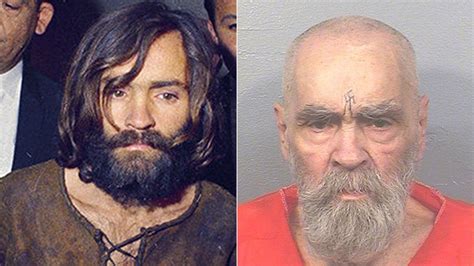The name Charles Manson is synonymous with brutality, manipulation, and horror. He was the mastermind behind a series of gruesome murders that took place in the late 1960s, primarily in California. Manson’s crimes were not only shocking due to their brutality but also because of the cultural and social context in which they occurred. The 1960s were a time of great social change, with the civil rights movement, the Vietnam War, and the emergence of the counterculture. Manson’s actions, however, represented a dark and twisted aspect of this era, exploiting the very ideals of freedom and nonconformity that many young people of the time embraced.
Early Life and the Formation of the Manson Family
Charles Manson was born on November 12, 1934, to Kathleen Maddox, a 16-year-old prostitute. His early life was marked by instability and violence, with his mother often leaving him with relatives or in foster care. This tumultuous upbringing would later influence Manson’s worldview and behavior. After serving time in prison for various crimes, including armed robbery, Manson was released in 1967. He made his way to San Francisco, where he became embroiled in the city’s vibrant counterculture scene. It was here that he began to attract a following of mostly young women who were disillusioned with mainstream society.
Manson’s charisma, musical talents, andpseudo-intellectual philosophies drew in these vulnerable individuals, who saw him as a guru or a messiah. He preached a mixture of Scientology, the Bible, and his own bizarre interpretations of Beatles songs, promising his followers a utopian future. This group, which would come to be known as the “Manson Family,” lived together in a communal setting, first at the Spahn Ranch and then at the Barker Ranch, both in California. Manson manipulated his followers through a combination of psychological games, physical abuse, and sexual exploitation, breaking down their individual identities and moral boundaries.
The Tate-LaBianca Murders
The most infamous crimes attributed to Manson and his followers are the Tate-LaBianca murders, which took place over two nights in August 1969. On August 9, 1969, Manson instructed four of his followers—Tex Watson, Susan Atkins, Patricia Krenwinkel, and Linda Kasabian—to go to 10050 Cielo Drive in Beverly Hills, where film director Roman Polanski lived with his pregnant wife, Sharon Tate. The group brutally murdered Tate, along with four others who were visiting the house: hairstylist Jay Sebring, writer Wojciech Frykowski and his girlfriend, Abigail Folger, and teenage student Steven Parent, who was visiting the caretaker.
The next night, August 10, 1969, Manson accompanied a group of his followers to the home of Leno and Rosemary LaBianca, a couple who lived in Los Feliz. The LaBiancas were brutally stabbed to death, with Manson himself participating in the murders. The crimes were marked by their savage nature, with the killers leaving behind haunting messages written in blood, such as “Pigs” and “Helter Skelter,” a reference to a Beatles song that Manson believed held apocalyptic significance.
Arrest, Trial, and Imprisonment
The investigation into the Tate-LaBianca murders was one of the most extensive in Los Angeles history at the time. It wasn’t until December 1969, months after the crimes, that the police began to focus on the Manson Family as suspects. Manson and several of his followers were arrested and later charged with the murders. The trial, which began in July 1970, was highly publicized due to the gruesome nature of the crimes and the fascination with the cult-like Manson Family.
Manson’s defense was that he was not responsible for the murders, claiming that the witnesses against him were lying. However, the prosecution, led by Vincent Bugliosi, presented a wealth of evidence, including testimony from former Manson followers who had turned against him. In January 1971, Manson was found guilty of first-degree murder and conspiracy to commit murder. He was sentenced to death, but when California abolished the death penalty in 1972, his sentence was commuted to life in prison.
Legacy and Cultural Impact
Charles Manson died in prison on November 19, 2017, at the age of 83. His legacy is one of horror and fascination, symbolizing the darkest aspects of human nature and the destructive power of cult mentality. The Manson murders have been the subject of numerous books, films, and documentaries, captivating the public’s imagination with their blend of true crime, psychology, and the mystique of the 1960s counterculture.
Manson’s impact on popular culture extends beyond the true crime genre, influencing music, film, and literature. His name has become synonymous with evil, and his crimes have served as a cautionary tale about the dangers of blind obedience and the manipulation of vulnerable individuals. The study of Manson and his followers also provides insights into the psychology of cults and the factors that contribute to groupthink and violent behavior.
In conclusion, Charles Manson’s crimes were a culmination of his own warped worldview, the vulnerability of his followers, and the societal conditions of the late 1960s. His actions and the subsequent trial not only shocked the nation but also left a lasting impact on American culture and society, serving as a reminder of the dangers of extremism and the importance of critical thinking and individual autonomy.
Understanding the Charles Manson case requires a deep dive into the psychological, social, and cultural factors that contributed to his actions and those of his followers. It's a complex interplay of charisma, manipulation, and the search for meaning in a tumultuous time.
FAQ Section
What were the main factors that led to Charles Manson's ability to form and control the Manson Family?
+Manson's ability to form and control the Manson Family was largely due to his charisma, the vulnerability of his followers, and the societal conditions of the late 1960s. He preyed on disillusioned young people who were looking for a sense of belonging and purpose, and he used a combination of psychological manipulation, physical abuse, and sexual exploitation to control them.
How did the investigation into the Tate-LaBianca murders lead to Charles Manson and his followers?
+The investigation was one of the most extensive in Los Angeles history at the time. It involved following up on numerous leads, interviewing hundreds of witnesses, and eventually focusing on the Manson Family as suspects after a series of arrests and confessions from former followers who had turned against Manson.
What is the significance of the term "Helter Skelter" in relation to Charles Manson and the Manson Family?
+"Helter Skelter" refers to a Beatles song that Manson believed held apocalyptic significance. He interpreted the song as a prophecy of an impending racial war in the United States, which he believed his followers would survive by hiding in an underground city. This belief was central to his philosophy and was referenced in the messages left at the crime scenes, such as the word "Pigs" and "Helter Skelter" written in blood.
Manson’s case continues to fascinate and horrify, serving as a lens through which we can examine the darkest aspects of human nature and the consequences of unchecked charisma and manipulation. His legacy is a complex and troubling one, reminding us of the importance of critical thinking, empathy, and the need to understand the factors that lead individuals down paths of extremism and violence.



